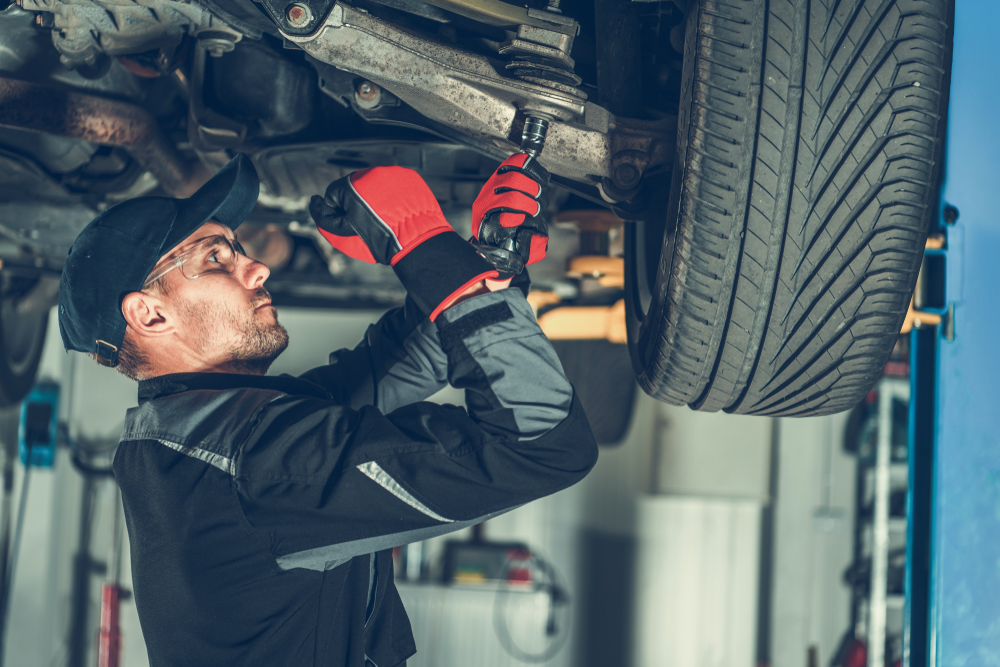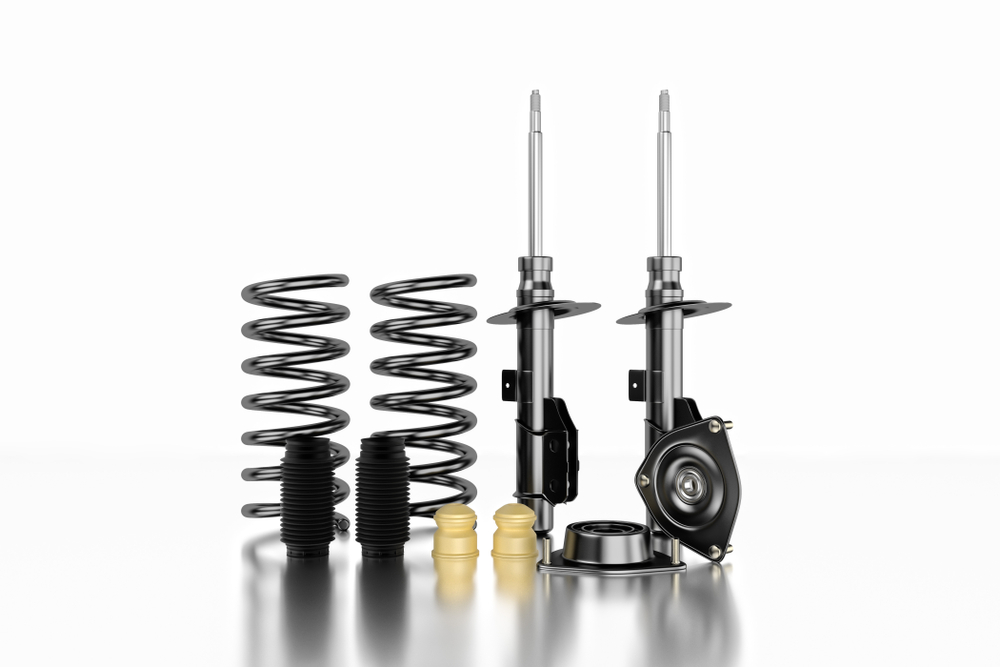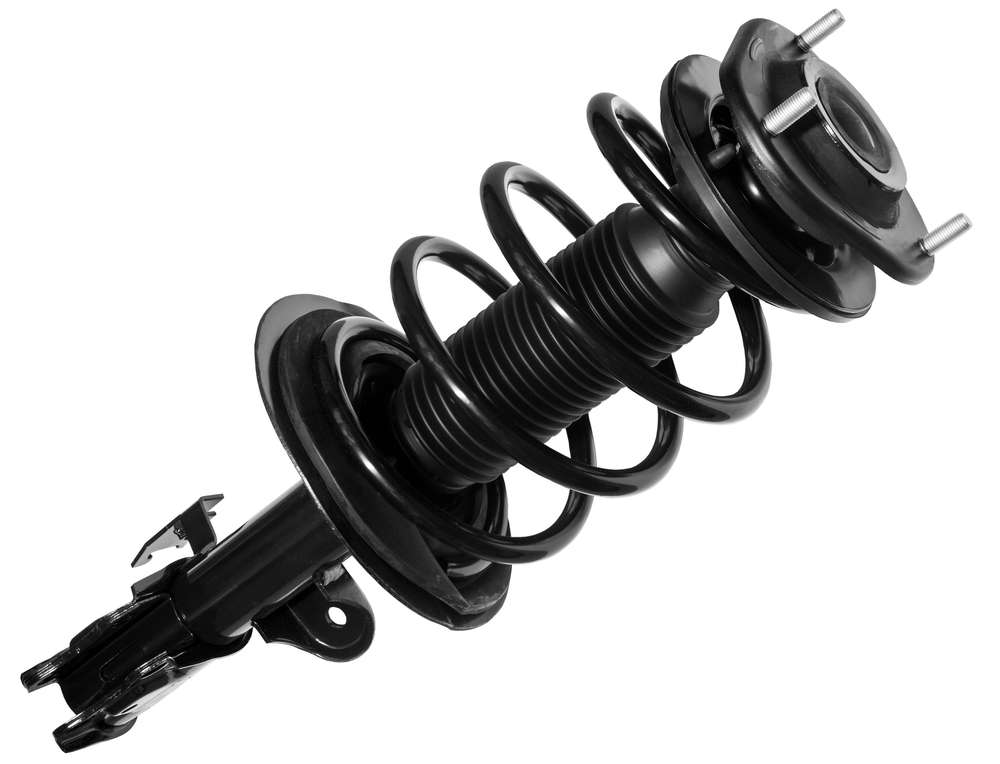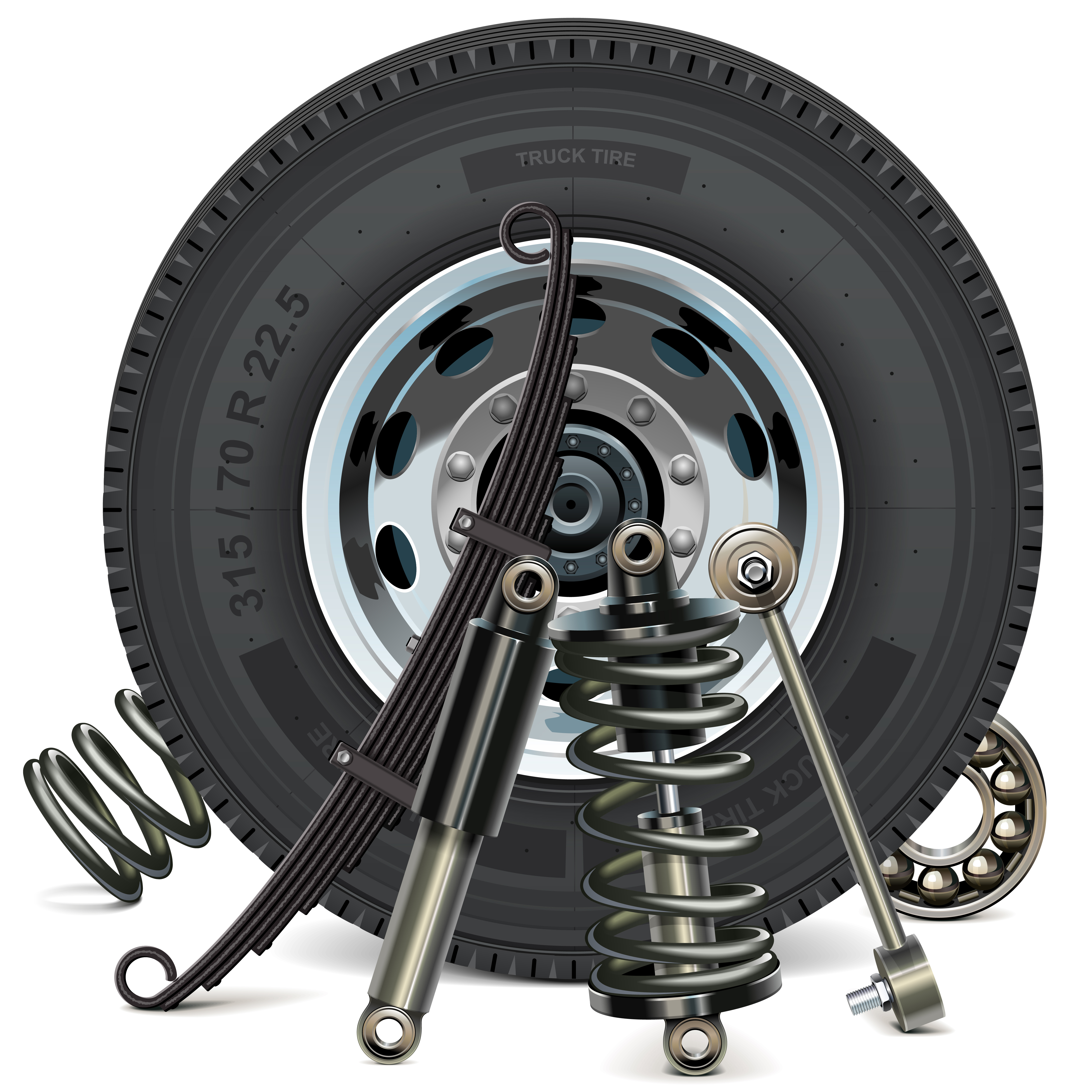

Many times, shock absorbers and struts are mentioned together. And we tend to think of them as a package deal when referring to them and our cars. Truth is, they are two very different things, although they both work together.
Shock absorbers are responsible for doing only 1 thing. They keep the car from bouncing. Struts are a part of the suspension system. They are mounted to the chassis and the springs are mounted on them. Struts help the springs maintain the height of the car.
Typically, cars made after 1995 will have a similar setup with shocks and struts. The struts will be on the front end and the back end will have the shock absorbers. Older cars will have shock absorbers on all 4 wheels.
How long do shock absorbers and struts last on a car?
Most car manufacturers will suggest that you should have your shock absorbers and struts checked, and possibly replaced, every 50,000 miles. Some automobile experts suggest it is possible to go as long as 100,000 miles before having them replaced. As a car owner, you should plan on having the struts and shock absorbers checked and replaced sometime between 50,000 and 70,000 miles.
What are some signs of bad shock absorbers?
Shock absorbers do tend to wear out gradually over time. This can make it pretty difficult to notice a problem. There are some signs, though, that can tell you it’s time to have them checked out.
- Unsteadiness on the road, especially in windy conditions. If you find that you have to correct your car while driving, it's time for a check.
- Your tires are wearing out unevenly.
- You notice a greater rocking or rattling when driving over bumps or dips in the road.
- You might notice dipping of the front end or swerving when you apply your brakes. This is a red flag.
- An excessive vibration in your steering wheel when driving is another sign.
- You might also notice a delayed stopping time when applying the brakes.

Should I replace front and rear shocks absorbers at the same time?
The general recommendation from mechanics is that shock absorbers and struts should be replaced in pairs. If the rear left is bad, then you should assume the right one is bad too. There is not much difference in the wear rate between pairs shocks or struts.
You do not necessarily need to replace both the front and rear at the same time, however. Just be sure to replace left and right together. If it has been about 50,000 miles since the last time they were replaced, it might be a good idea to replace them all.
How much does it cost to replace shocks and struts?
When you are having a mechanic replace your shocks and struts, you will have to pay for parts and labor. To replace the struts, expect to pay between $450.00 and $900.00 for the pair. If you need to replace all 4, it will be double. The labor cost can run from $150.00 to $300.00
If you are replacing your shock absorbers, you will probably pay between $200.00 and $400.00 for the pair. Again, if you are replacing 4, the price will be doubled. The labor for this will run you between $400.00 and $600.00 at $100.00/hour.
The prices will vary depending on where you live. It will also vary depending on where you have the work done. Typically, a dealership will cost you a lot more than going to an independent mechanic.
Be sure to check around for different price options and know exactly what you will be paying for. In addition, it is always a good idea to have your tires balanced after having new struts or shocks. An alignment can cost between $80.00 and $160.00 for 2 tires, double that for all 4.
How long does it take to replace the shocks and struts on my car?
If you are having your mechanic replace a single set, it can take about 3 hours. If you are replacing all 4, you should expect it to take a day or 2. Be sure you plan accordingly when scheduling this type of repair.
How do I know if my car has shocks and struts?
All cars will have shocks and struts. The important thing is to know which one is on each wheel. Your car will have both, although you will not have both on each wheel. Generally, the front wheels will have struts and the rear wheels will have shocks.
When looking at the underside of your car, you can tell the difference between struts and shocks by how they are mounted.
Shocks are placed vertically and they resemble a pneumatic pump. Struts are mounted horizontally and look like extensions of the wheel.
Can I replace my shock absorbers and struts myself?
You can replace the shocks and struts on your car yourself with some tools and some time.
- Check if you need a spring compressor. You will need this tool if your shocks and struts are integrated. If you do not remove them correctly, they can pop off and cause damage to your car or yourself. This will be the hardest part of the job. If you do not have a spring compressor, it is possible to rent one. Be sure that they show you how to use it correctly.
- If you have access to a car lift, that’s great! If not, you will need to jack up one side of your car high enough to get a jack stand underneath it.
- Remove the wheel and take the shock or strut off. You will need some muscle to get the shock absorber off. If it is the strut, you may need to use the spring compressor. You will see that there are usually 3 bolts that hold the strut in place on the bottom. On the top the strut extends into the strut tower. You may need an impact wrench to remove it.
- Install your new shock absorber or strut by simply reversing the directions.
- Don’t forget to have your tires balanced and alignment checked.
- You are all set!

Final Thoughts
Shocks and struts are important parts of your car’s suspension system. Like all other car parts, they do need to be replaced from time to time. After about 50,000 miles you should plan on getting them checked and replaced.
Some signs that you need to replace the shocks and struts will include: your car has trouble driving straight when it is windy, you might notice that your tires are wearing out unevenly, there might be a greater degree of rocking or rattling when driving over dips and bumps in the road, there might be some excessive dipping or swaying in the front end of your car when stopping, there might be excessive vibration in your steering wheel when driving and you might notice a delay in stopping time when applying the brakes.
Make sure you take steps to replace your shocks and struts in a timely manner. It will help prevent bigger problems down the road.
